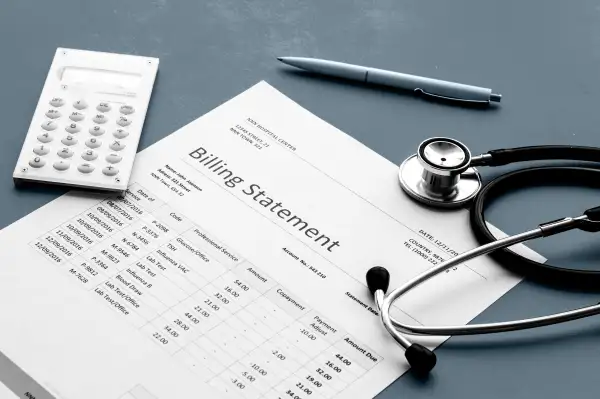A New Federal Law Aims to End Maddening Surprise Medical Bills

Say goodbye to surprise medical bills.
The federal No Surprises Act, which protects consumers with private health insurance by banning most surprise bills from out-of-network providers, went into effect on Jan. 1.
In the past, many patients who received emergency care from a facility or doctor that was out of their network — or scheduled non-emergency care that involved an out-of-work doctor — were hit with unexpected bills after their treatment. These bills often came from medical providers that were difficult (if not impossible) for patients to research in advance: You could do your homework and make sure your main surgeon participated in your insurance plan, for example, only to have a non-participating anesthesiologist treat you before surgery.
But now these bills should disappear.
"Through new rules aimed to protect consumers, excessive out-of-pocket costs will be restricted, and emergency services must continue to be covered without any prior authorization, and regardless of whether or not a provider or facility is in-network," according to the U.S. Centers for Medicare & Medicaid Services.
Some states have consumer protection laws in place against surprise bills, but this is the first comprehensive federal legislation to address the topic.
Air ambulances are also included in the No Surprises Act, so there should be no surprise bills if you have to be air lifted for medical treatment. Be warned, however, that ground ambulances are not included in the No Surprises Act. So you could still face surprise medical bills if you need a ride in a traditional ambulance.
Lawsuits from medical providers are underway, but shouldn't impact the ban on surprise bills. (If the suits are successful, though, they could lead to higher health insurance premiums, according to the Center on Health Insurance Reforms at Georgetown University's McCourt School of Public Policy.)
How common are surprise medical bills?
Previously, receiving a surprise bill from an out-of-network provider after emergency care was common. Among privately insured patients, an estimated one in five emergency claims and one in six in-network hospitalizations included at least one out-of-network bill, the Kaiser Family Foundation reported in 2021.
And two in three adults say they worry about unexpected medical bills, which can cost hundreds or even thousands of dollars, according to the foundation.
What should you do if you receive a surprise medical bill?
Before, out-of-network providers would often bill patients directly. Then the patient would have to submit that out-of-network claim to their insurance and collect whatever reimbursement they could, according to the Kaiser Family Foundation.
Under the new law, providers need to submit the surprise out-of-network bill to the patient's health insurance plan, which must then advise the doctor or hospital of the applicable in-network cost sharing amount for the claim. The health insurer will then send an initial payment to the provider, and the patient will receive an explanation of benefits (a statement explaining what was covered and what the patient owes the out-of-network provider).
Only after all of this occurs can the out-of-network provider send the patient a bill. Critically, the bill can't be more than what you would have owed if the providers accepted your insurance, Kaiser Family Foundation adds.
If you receive a bill from an out-of-network provider that is higher than the amount on your explanation of benefits, you should ask your provider for a revised bill, according to the Center on Health Insurance Reforms. If that doesn't solve the problem, file a complaint with the federal "No Surprises Help Desk" online or via phone at 1-800-985-3059.
Keep in mind that while the federal law bans surprise billing, consumers are still responsible for any in-network costs — and understanding those can still be complicated. For tips on how to lower medical costs, check out Money's guide to saving money on medical bills, prescription drugs and more.
More from Money:
Average Costs for a COVID-19 Hospital Stay Top $400,000 in Some States: Study
Health Care Now Costs Couples $300,000 in Retirement, According to Fidelity's Latest Estimate
How to Save Money on Prescription Drugs, Medical Bills and Other Health Care Costs
